
How to Use ESP32-WROOM-32: Examples, Pinouts, and Specs
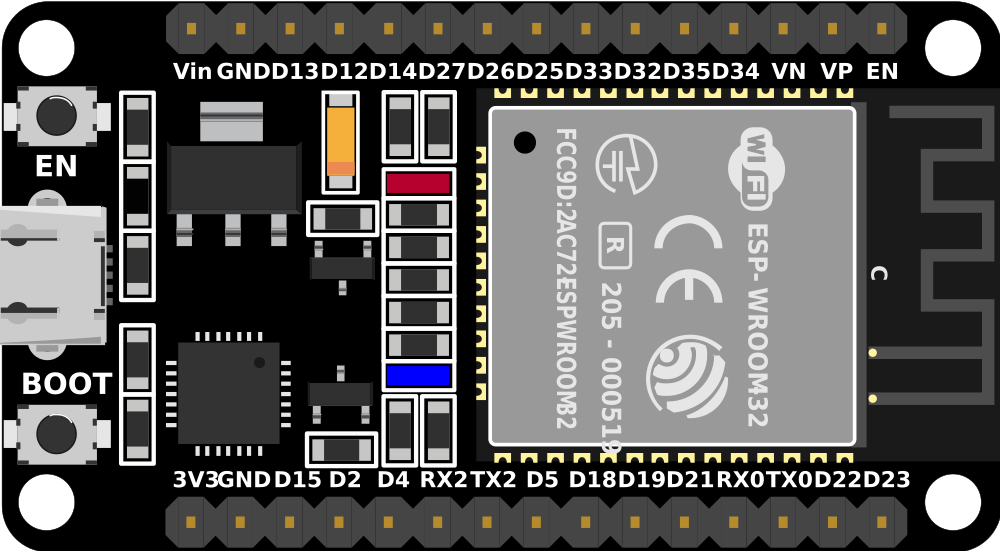
 Design with ESP32-WROOM-32 in Cirkit Designer
Design with ESP32-WROOM-32 in Cirkit DesignerIntroduction
The ESP32-WROOM-32 is a powerful Wi-Fi and Bluetooth microcontroller module developed by Espressif Systems. It features dual-core processing, making it ideal for a wide range of IoT applications and embedded systems. With its integrated wireless capabilities, the ESP32-WROOM-32 is widely used in smart home devices, wearables, industrial automation, and more.
Explore Projects Built with ESP32-WROOM-32
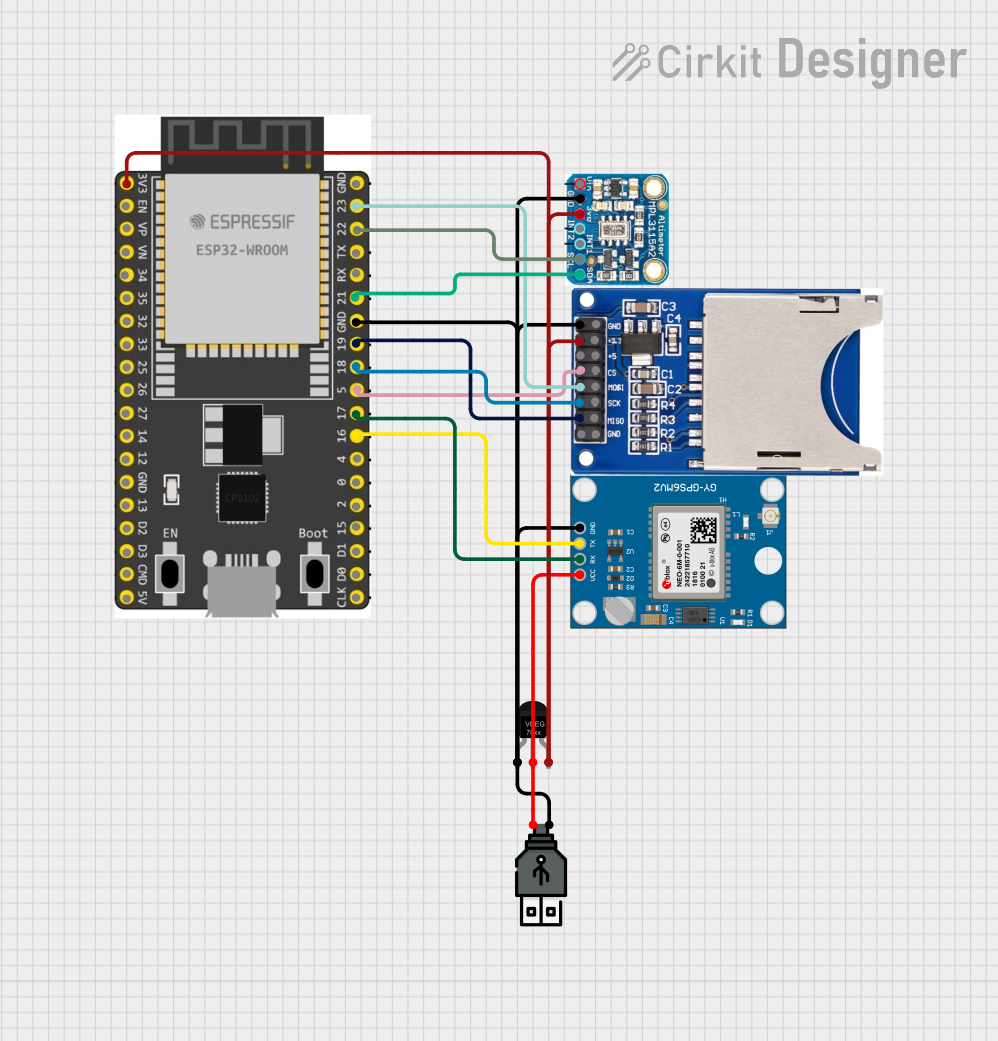
 Open Project in Cirkit Designer
Open Project in Cirkit Designer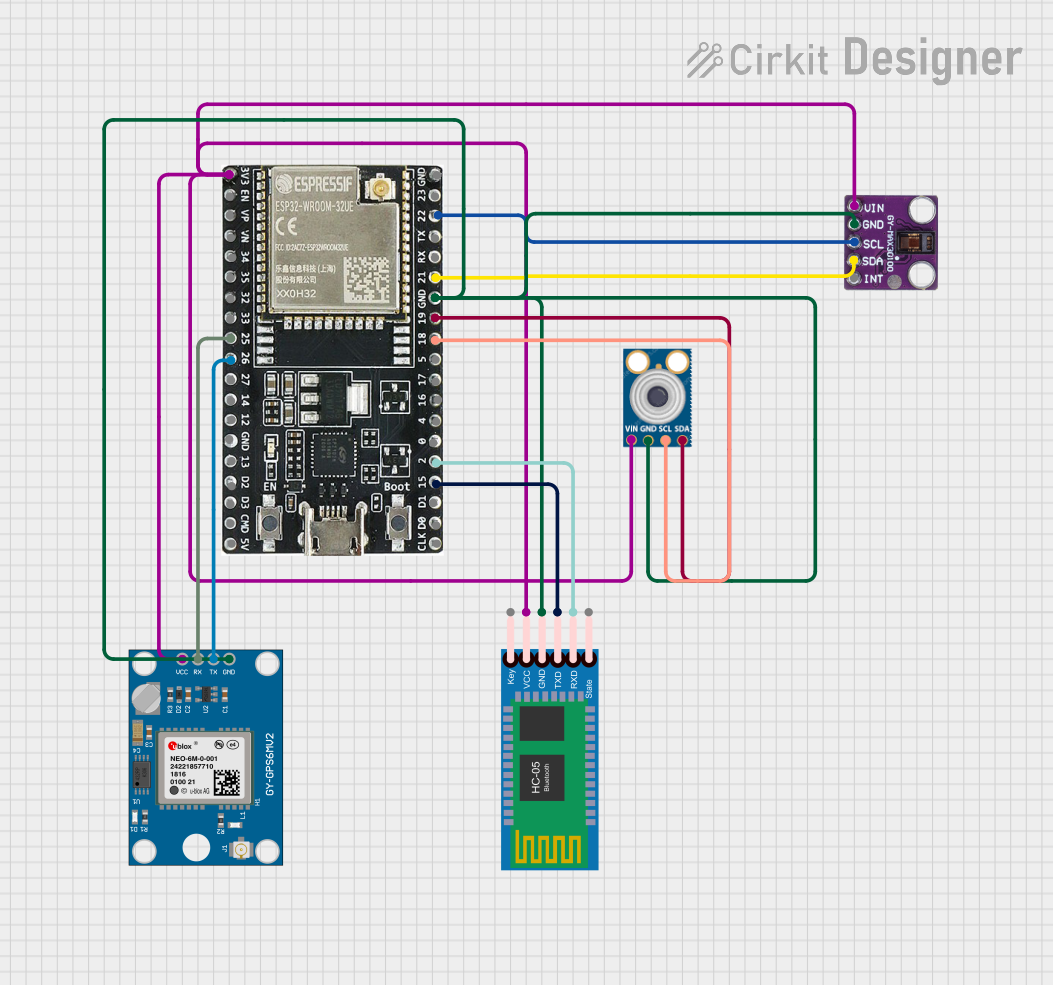
 Open Project in Cirkit Designer
Open Project in Cirkit Designer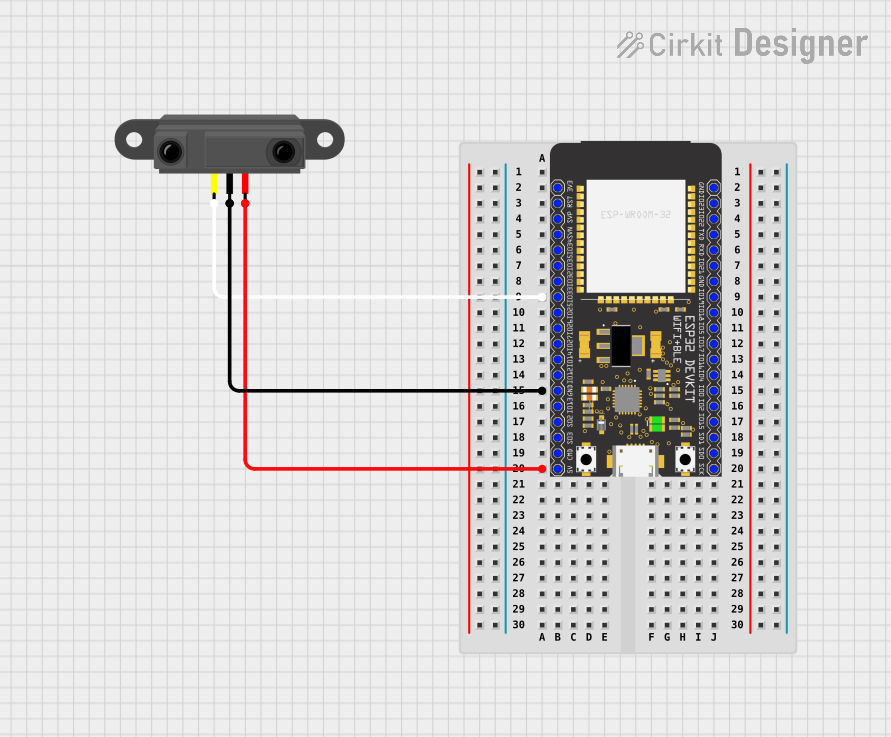
 Open Project in Cirkit Designer
Open Project in Cirkit Designer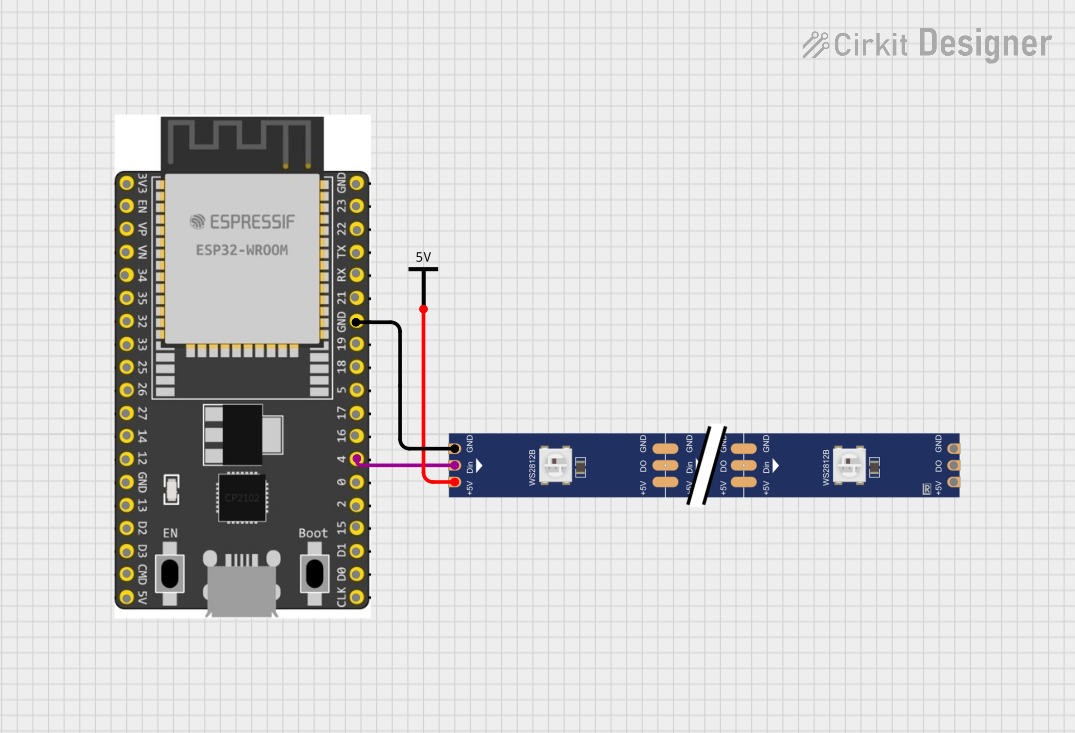
 Open Project in Cirkit Designer
Open Project in Cirkit DesignerExplore Projects Built with ESP32-WROOM-32

 Open Project in Cirkit Designer
Open Project in Cirkit Designer
 Open Project in Cirkit Designer
Open Project in Cirkit Designer
 Open Project in Cirkit Designer
Open Project in Cirkit Designer
 Open Project in Cirkit Designer
Open Project in Cirkit DesignerCommon Applications and Use Cases
- IoT Devices: Smart home automation, environmental monitoring, and connected appliances.
- Wearables: Fitness trackers, smartwatches, and health monitoring devices.
- Industrial Automation: Wireless sensor networks, machine monitoring, and control systems.
- Prototyping and Development: Rapid prototyping for IoT and embedded systems projects.
- Wireless Communication: Bluetooth Low Energy (BLE) and Wi-Fi-based communication systems.
Technical Specifications
The ESP32-WROOM-32 module is based on the ESP32-D0WDQ6 chip and offers a rich set of features for wireless communication and processing.
Key Technical Details
| Parameter | Value |
|---|---|
| Manufacturer | Espressif Systems |
| Part ID | ESP32-WROOM-32D |
| Microcontroller | ESP32-D0WDQ6 |
| Wireless Connectivity | Wi-Fi 802.11 b/g/n, Bluetooth v4.2 (Classic and BLE) |
| Processor | Dual-core Xtensa® 32-bit LX6 CPU, up to 240 MHz |
| Flash Memory | 4 MB (default) |
| SRAM | 520 KB |
| Operating Voltage | 3.0V to 3.6V |
| GPIO Pins | 34 (multiplexed for various functions) |
| ADC Channels | 18 (12-bit resolution) |
| DAC Channels | 2 |
| Communication Interfaces | UART, SPI, I2C, I2S, CAN, PWM |
| Power Consumption | Ultra-low power consumption in deep sleep mode (~10 µA) |
| Operating Temperature | -40°C to +85°C |
| Dimensions | 18 mm x 25.5 mm x 3.1 mm |
Pin Configuration and Descriptions
The ESP32-WROOM-32 module has 38 pins, with the following key functions:
| Pin Number | Pin Name | Function |
|---|---|---|
| 1 | EN | Enable pin. Active high. Resets the module when pulled low. |
| 2 | IO0 | GPIO0. Used to enter bootloader mode during programming. |
| 3 | IO2 | GPIO2. Can be used as a general-purpose input/output pin. |
| 4 | IO4 | GPIO4. General-purpose I/O. |
| 5 | IO5 | GPIO5. General-purpose I/O. |
| 6 | GND | Ground. Connect to the ground of the power supply. |
| 7 | 3V3 | 3.3V power supply input. |
| 8 | IO12 | GPIO12. Can be used as an input/output pin. |
| 9 | IO13 | GPIO13. General-purpose I/O. |
| 10 | IO14 | GPIO14. General-purpose I/O. |
| 11 | IO15 | GPIO15. General-purpose I/O. |
| 12 | IO16 | GPIO16. General-purpose I/O. |
| 13 | IO17 | GPIO17. General-purpose I/O. |
| 14 | IO18 | GPIO18. General-purpose I/O. |
| 15 | IO19 | GPIO19. General-purpose I/O. |
| 16 | IO21 | GPIO21. General-purpose I/O. |
| 17 | IO22 | GPIO22. General-purpose I/O. |
| 18 | IO23 | GPIO23. General-purpose I/O. |
| 19 | IO25 | GPIO25. General-purpose I/O. |
| 20 | IO26 | GPIO26. General-purpose I/O. |
| 21 | IO27 | GPIO27. General-purpose I/O. |
| 22 | IO32 | GPIO32. General-purpose I/O. |
| 23 | IO33 | GPIO33. General-purpose I/O. |
| 24 | IO34 | GPIO34. Input-only GPIO. |
| 25 | IO35 | GPIO35. Input-only GPIO. |
| 26 | TXD0 | UART0 Transmit. |
| 27 | RXD0 | UART0 Receive. |
| 28 | GND | Ground. Connect to the ground of the power supply. |
Usage Instructions
The ESP32-WROOM-32 is versatile and can be used in a variety of applications. Below are the steps to use it in a circuit and program it.
How to Use the Component in a Circuit
- Power Supply: Provide a stable 3.3V power supply to the
3V3pin and connect theGNDpin to the ground. - Programming: Use a USB-to-serial adapter to connect the module to your computer. Connect:
TXD0to the adapter's RX pin.RXD0to the adapter's TX pin.GNDto the adapter's ground.
- Boot Mode: To upload code, hold the
IO0pin low while resetting the module using theENpin. - GPIO Usage: Connect peripherals (e.g., sensors, LEDs) to the GPIO pins as needed. Ensure the pins are not overloaded beyond their current limits.
Important Considerations and Best Practices
- Voltage Levels: Ensure all input signals to the GPIO pins are within the 3.3V range to avoid damage.
- Deep Sleep Mode: Use deep sleep mode to minimize power consumption in battery-powered applications.
- Antenna Placement: Ensure the onboard antenna has sufficient clearance from metal objects to avoid interference.
- Pull-up/Pull-down Resistors: Use appropriate pull-up or pull-down resistors for GPIO pins that require stable logic levels.
Example Code for Arduino UNO
The ESP32-WROOM-32 can be programmed using the Arduino IDE. Below is an example of a basic Wi-Fi connection:
#include <WiFi.h> // Include the Wi-Fi library for ESP32
// Replace with your network credentials
const char* ssid = "Your_SSID";
const char* password = "Your_PASSWORD";
void setup() {
Serial.begin(115200); // Initialize serial communication at 115200 baud
delay(1000); // Wait for a second to stabilize
Serial.println("Connecting to Wi-Fi...");
WiFi.begin(ssid, password); // Start Wi-Fi connection
while (WiFi.status() != WL_CONNECTED) {
delay(500); // Wait for connection
Serial.print(".");
}
Serial.println("\nWi-Fi connected!");
Serial.print("IP Address: ");
Serial.println(WiFi.localIP()); // Print the assigned IP address
}
void loop() {
// Add your main code here
}
Troubleshooting and FAQs
Common Issues and Solutions
- Wi-Fi Connection Fails:
- Solution: Double-check the SSID and password. Ensure the router is within range.
- Module Not Detected by Computer:
- Solution: Verify the USB-to-serial adapter connections. Install the correct USB driver.
- GPIO Pin Not Responding:
- Solution: Check for proper pull-up/pull-down resistors. Ensure the pin is not overloaded.
- Code Upload Fails:
- Solution: Ensure the
IO0pin is held low during reset. Check the baud rate in the Arduino IDE.
- Solution: Ensure the
FAQs
Q: Can the ESP32-WROOM-32 operate on 5V?
A: No, the module operates on 3.3V. Use a voltage regulator if your power source is 5V.Q: How do I reset the module?
A: Pull theENpin low momentarily to reset the module.Q: Can I use the ESP32-WROOM-32 with Bluetooth and Wi-Fi simultaneously?
A: Yes, the module supports simultaneous use of Bluetooth and Wi-Fi.Q: What is the maximum range of the Wi-Fi?
A: The range depends on the environment but typically extends up to 100 meters in open space.
This documentation provides a comprehensive guide to using the ESP32-WROOM-32 module effectively.